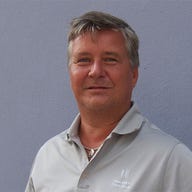Norway's 4G auction wraps with mystery winner – and one big loser

Norway's 4G spectrum auction has come to an end today: after a two-stage bidding process, the winners, their allocations and the amounts they paid have now been made public.
The auction saw four companies compete for blocks of spectrum in the 800Mhz, 900Mhz and 1800Mhz bands, all with 20-year licences. All the spectrum is technology agnostic, but will be used by the winning mobile operators for high-speed mobile broadband.
Telenor and TeliaSonera-owned NetCom won the spectrum they were predicted to, while new entrant Telco Data clinched a third lot of frequencies. Tele2, currently Norway's third largest mobile operator, was the biggest loser in the auction, winning no spectrum at all. In total, the auction collected NOK 1.8bn (€212m).
Two rounds, three bands
Tech Roundup: 4G
The auction was carried out in two rounds with sealed bids. The first round, the allocation stage, established which companies would get spectrum, and how much they would hold in total. The second round, the 'assignment stage', determined the exact frequency positions each operator would get and if necessary resolved any conflicts with a second round of closed bids.
According to NPT, the Norwegian telecom regulator, the auction rules were set up in such a way as to ensure best use of the available spectrum, and avoid unnecessary fragmentation of the frequency bands.
Available frequencies
In the 800 band, there were 2x30MHz spectrum blocks available. The spectrum was part of the 'digital dividend': frequencies freed up after broadcasters moved TV signals from analogue to digital. The spectrum was split into six blocks of 2x5MHz, with a cap of 2x10MHz per operator.
One 2x10 MHz block in the band comes with notably higher coverage obligations: the winner of the block must cover 98 percent of the population in Norway within five years. The other blocks in the band have a coverage obligation of 40 percent of the population within four years (the 'usage obligation'). The minimum service for all blocks in the 800MHz band is an average downlink of 2Mbps.
In the 900 MHz band, 2x15MHz of spectrum split into three 2x5MHz blocks were put up for auction. Here, the frequency cap was 2x15 MHz per operator, including existing allocations – the stipulation applies to Telenor and TeliaSonera, both of which already hold 2x10MHz.
In the 1800 MHz band, 2x55MHz went under the hammer. In this band, the frequency cap was 2x20MHz per operator, also including existing allocations – again, both Telenor and TeliaSonera already held tranches of spectrum in this band, this time 2x20Mhz each.
Allocations
Late last week, NPT announced the winners of the first round of the auction:
TeliaSonera won:
- 2 x 10MHz in the 800MHz band
- 2 x 5MHz in the 900MHz band
- 2 x 10MHz in 1800MHz band
Telenor won:
- 2 x 10MHz in the 800MHz band
- 2 x 5MHz in the 900MHz band
- 2 x 10MHz in the 1800MHz band
Telco Data won:
- 2 x 10MHz in the 800MHz band
- 2 x 5MHz in the 900MHz band
- 2 x 20MHz in the 1800MHz band
Three 2x5MHz blocks in the 1800MHz band went unsold.
Telco Data
The biggest surprise in the announcement was the newcomer Telco Data winning the largest allocation — an operator no one had heard about before. A quick search in databases covering Norwegian incorporated companies showed that Telco Data was established as late as the 30 October this year.
When the local press began investigating who's behind Telco Data, they were given a vague statement that the company was an "international actor in the telecom and media industry", who would announce its identity and intentions "some time after new year".
The Norwegian finance newspaper DagensNæringsliv subsequently discovered that Telco Data was owned by AI Media Holdings, part of Access Industries. The group is owned by the Ukrainian billionaire Leonard Blavatnik and acquired Warner Music Group for $3.3bn in 2011.
Access Industries already owns the Nordic mobile broadband operator Ice.net, which provides data-only services via the 450MHz band, previously used for analogue mobile communication. Ice.net operates in Norway, Sweden and Denmark.
Big price differences
Today, NPT announced the specific frequency allocations, and the prices paid for the licences. This shows that there was a rather big difference in the bids in the auction:
TeliaSonera paid almost NOK 627m (€74m) for its allotment; Telenor paid NOK 452m (€54m); and Telco Data forked out NOK 705m (€84m) for its licences.
By way of comparison, a 4G-compatable spectrum auction held three years ago in Sweden brought in roughly the same amount, but only covered the 800MHz band.
The road ahead
The operators must pay the fees within 10 days. Once that's done, the Ministry of Transport and Communication will issue the formal and operators can begin using the spectrum from 1 January 2014.
NetCom has the biggest responsibility, as they won the coverage block in the 800 MHz band. NetCom presented this as a big opportunity for the company:
"We will increase the 4G coverage in Norway from 50 percent up to 65 percent overnight, when the NPT gives us access to the frequencies," August Baumann, CEO of NetCom, said in a statement.
He said the rollout will happen first in the southern part of Norway.